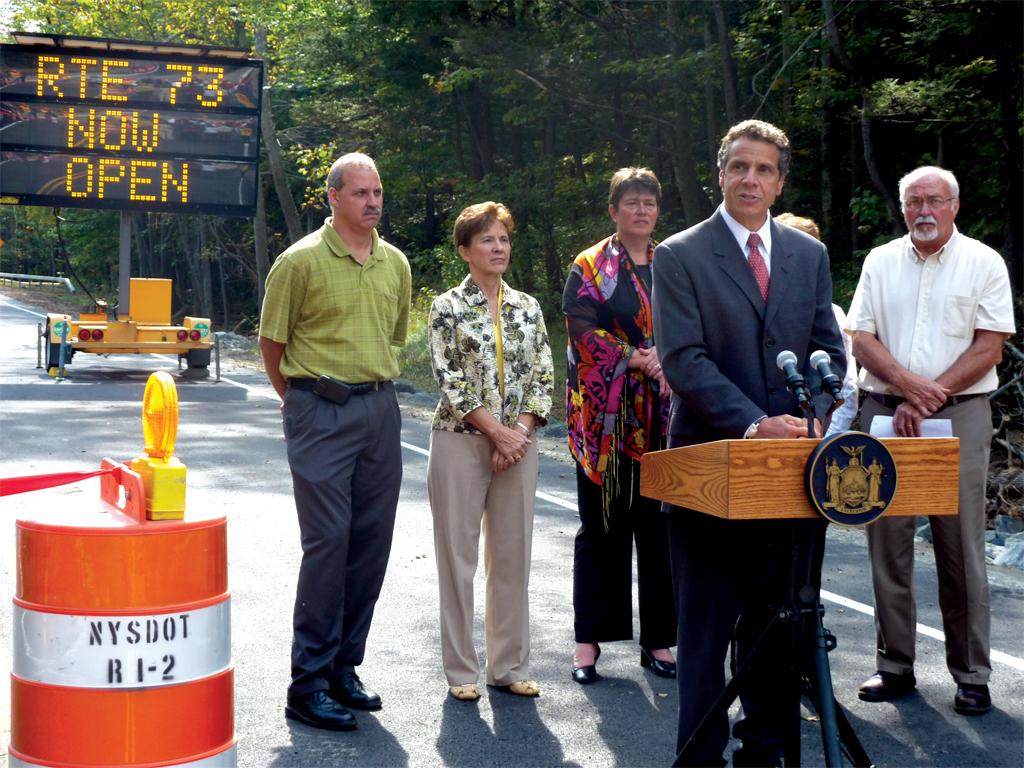
Binghamton University’s Events Center ceased operating as a shelter for flood victims Wednesday. All evacuees who took refuge there in the two weeks of its operation — more than 1,700 at the shelter’s peak — have now relocated to other housing.
The Events Center was opened as a shelter for flood victims on Wednesday, Sept. 7. Broome County Emergency Services notified the University at 4 p.m. that day that the building needed to be used as a shelter, and the Events Center began receiving evacuees two hours later at 6 p.m., according to David Hubeny, emergency manger for BU.
The American Red Cross also opened 17 other shelters in the region on Sept. 7 to help those affected by Tropical Storm Lee, according to Amy Laurel Hegy, public affairs manager for the American Red Cross’ Hurricane Irene response efforts in New York State.
On Wednesday, two weeks after the Events Center’s doors opened to evacuees, the last Binghamton area residents who had been sheltering there left. In those two weeks, the Red Cross, various governmental offices, and BU students and staff alike contributed to assisting at the Events Center shelter in many ways.
Hegy praised the University’s disaster response.
“They have their disaster drills every month and you can see it show up in the way that they were able to quickly organize and effectively handle situations that came up,” Hegy said. “In my experience, this was the best example of how to [handle such a situation] that I have seen in my career.”
Hegy explained that the University and the Red Cross each took on specific responsibilities throughout the two weeks the Events Center operated as a shelter.
“We [the Red Cross] were responsible for shelter workers, volunteers and the management of the shelter whereas the University took care of the management of the building,” she said.
The Red Cross also provided disaster health and mental services, client casework and supplies to evacuees.
Hegy also spoke favorably about students’ contributions.
“The students completely stepped up to the plate and came in to do everything from sweeping floors, serving food, providing EMS and nursing services and offering entertainment,” Hegy said. “The women’s soccer team came in toward the end of the shelter and as a team, took on the job to help people [by the] showers. You could see the athletic teamwork show up in the group recovery teamwork.”
Hubeny called students an “invaluable resource” during the crisis.
“It was an opportunity for the University community and students to lend a hand and they rose to the challenge and showed the care and compassion they have for the local community,” Hubeny said.
Students from the Decker School of Nursing worked in shifts to provide nursing care to evacuees with special medical needs who were temporarily housed in the West Gym in the first week after the flood.
Scott Rosen, a junior in the Decker School of Nursing, volunteered at the West Gym, helping evacuees with basic needs, like showering and eating.
“I did it to give back to the Binghamton community and what I got out of it was an experience that I will never forget,” Rosen said.
Other students without specialized training simply spent time with evacuees, listening to their stories or distributing water.
The Red Cross is currently still operating three shelters for flood victims and supporting a fourth. It is also feeding more than 2,000 people, distributing supplies to people fixing their homes and providing disaster health and mental services.
Hubeny said the University is still involved with fundraising and collecting goods to benefit those affected by the flood.


